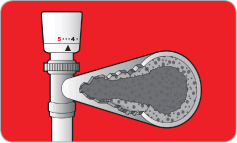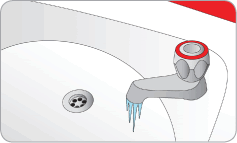Power Flushing; Q&A's
What is a power flush and why do central heating systems need power flushing?
A power flush is simply a process that gives your central heating system a thorough internal clean and will improve the central heating system’s performance; which can lead to lower gas bills. Suprisingly we still come accross new boilers that have been installed by other companies and the central heating system has not been correctly flushed, customers are often suprised to hear there new boiler now needs an expensive repair all because the installer never powerflushed the central heating system correctly. Power flushing your Central Heating system can also extend the lifespan of your boiler and under all maunfacturers installation guidlines your warrenty could be invalid if your system is not flushed properly when an old central heating boiler is being replaced by a new boiler.
How does Power Flushing work?
Because the water in a central heating system is always pumped in the same direction, iron filings, sludge, oil and grease build up within each radiator in your system. This has a detrimental effect on the efficiency of both your radiators and your boiler – in fact – your whole central heating system, reducing it’s life expectancy. When a system is professionally Power Flushed, the system is flushed in different directions, agitating the sludge and debris, so the system can be drained of the deposits. When flushing a system, special chemicals are used to ensure the breakdown of the sludge inside the system, prior to the deposits being removed.
Will a Power Flush Cause Leaks?
Power Flushing does NOT cause leaks but it CAN sometimes expose weaknesses within the system, for example expose pin-holes in the radiator, caused by corrosion; the leaks previously being clogged by sludge and debris inside the radiator. Unless the central heating system is very old, these issues rarely raise their head, but it’s something that MUST be considered if you are going to have your heating system Power Flushed, as such leaks can lead to additional unforeseen costs.
How often does my system need a Power Flush?
In truth it should never need a Power Flush. Installations that have not been maintained will break down, & clogg up. Once a central heating system has undergone a professional Power Flush, you are advised to add System Inhibitor to the system to prevent further corrosion and to ensure your system runs more efficiently. It is required by all manufacturers that an installation is Flushed properly before a new replacement boiler is installed. This could be a Power Flush, but this is something we will establish at the survey when providing the estimation for your install.
How Long Does a Power Flush Take?
If you allow 30-40 minutes per radiator this will be an average time. However it really does depend on the state of the installation and the condition of the components.
Can you Power Flush a Microbore system?
I would strongly avoid Power Flushing pipework smaller than 15mm (1/2"), as it is at greater risk of clogging up at hidden bends.
How much does a Power Flush Cost?
It does depend on the size of the installation. Prices do start at £300+VAT. TP&HSL will survey your installation before providing an estimate. We will want your heating to have been running for at least 30mins prior to surveying.




Noisey boiler
Poor wateflow on Hot Water outlets &/or water temperature fluctuating
Radiators are cold at the bottom & middle, & when bleeding the water is jet black
Blocked pipes remaining cold
